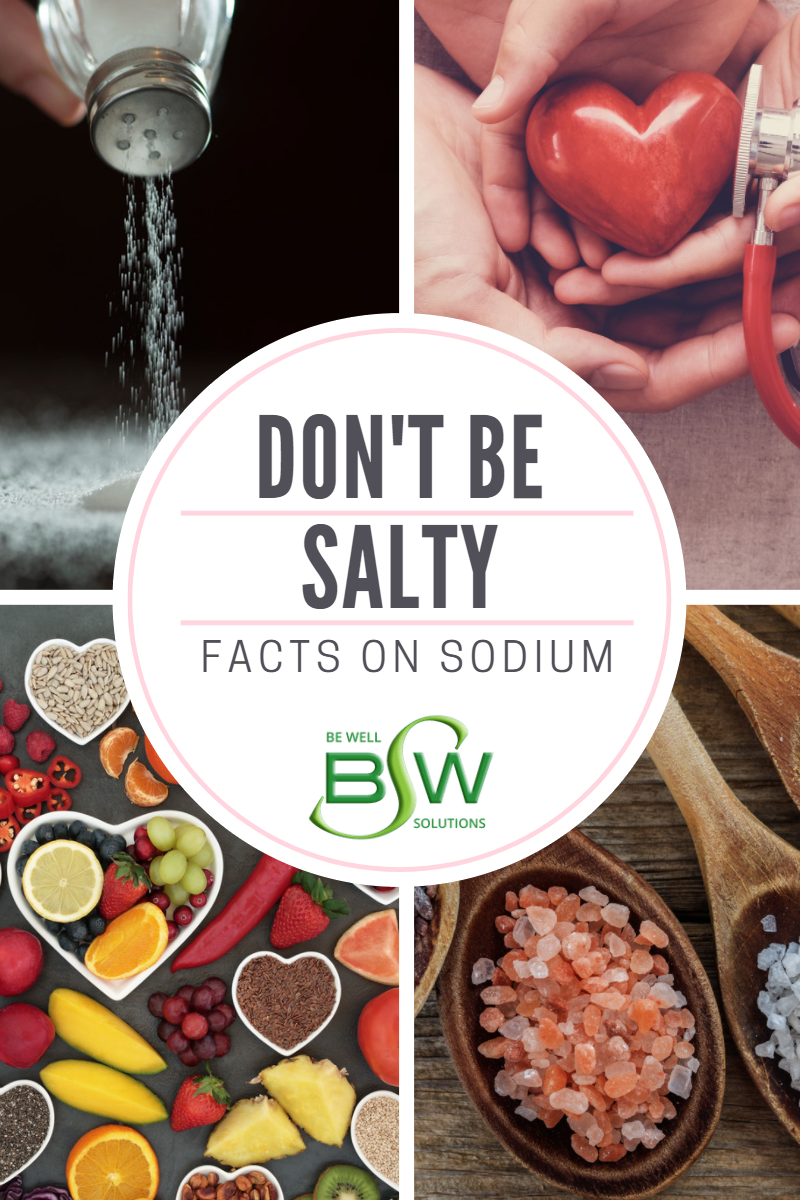
The month of February is dedicated to heart health. A heart healthy lifestyle focuses on low sodium foods, a variety of fruits and vegetables, healthy fats, and regular physical activity. Making small changes to your diet can help support your heart. Let’s focus on some ways to decrease your sodium intake. Sodium is an essential nutrient, but most Americans consume too much sodium. Excess sodium intake can lead to high blood pressure, which increases the risk of heart and kidney disease along with stroke.
Check out the following myths and the low sodium shopping list to help you kick excess sodium out of your diet.
Myth 1: Sea salt is healthier than table salt.
Fact: Sea salt and table salt contain the same amount of sodium. Limit the use of all types of salt (sea salt, table salt, Himalayan pink salt, etc.)
Myth 2: I don’t put salt on my food, so I don’t need to worry about my sodium intake.
Fact: Sodium is found in many foods besides the saltshaker. Most of the salt we eat comes from packaged foods. Sodium is in breads, pizza, sandwiches, soups, tacos, condiments, snack foods, deli and cured meats (bacon, hot dogs, sausages, etc.). Cutting down on portions of these foods can decrease your sodium intake. Make simple changes while grocery shopping. Try unsalted or reduced sodium foods.
Myth 3: Food will taste bland without salt.
Fact: Use fresh and dried herbs to add a boost of flavor to a recipe. Your taste buds will adjust to less salt. Interested in using fresh herbs? Check out this article on how to use fresh herbs in your favorite dishes.
Heart Healthy Grocery List
- Fresh fruits & veggies
- No sodium added or low sodium canned beans & veggies
- Plain frozen veggies
- Unsalted nuts (almonds, walnuts, etc.)
- Lean meats
- Look for unseasoned lean cuts of beef (round or loin) and pork (loin)
- Poultry without skin
- 90% lean or higher ground meat
- Omega-3 rich fish (salmon bluefin tuna, mackerel, etc.)
- Plain brown rice, quinoa, or whole wheat pasta
- Fresh and dried herbs (thyme, rosemary, garlic powder, etc.)
- Olive or canola oil instead of salted butter
Meal Ideas
Try these recipes that use ingredients from the heart healthy grocery list to make a quick but nutritious meal.
Napa Valley glazed salmon recipe
Tip: Pair the salmon with brown rice or quinoa and veggies of your choice.
Slow cooker barbeque chicken or pork recipe
Tip: Use the chicken or pork in a salad or 100% whole wheat bun or wrap for a nutrient dense meal.
Written by BWS Dietitian-Melissa Morningstar Vajas RD, LD
